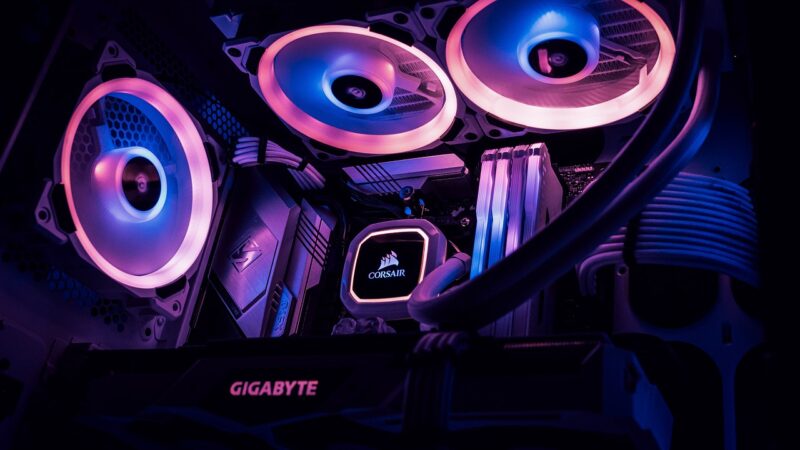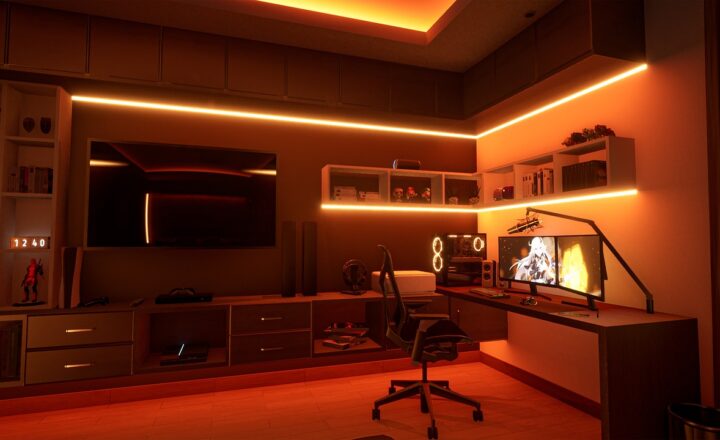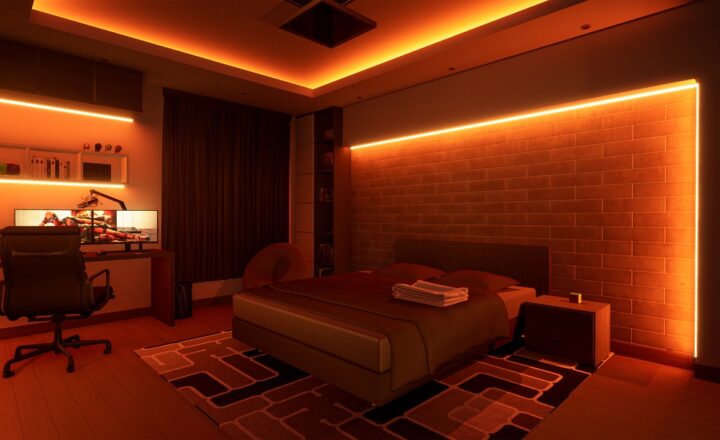How to Build a High-Performance Gaming PC: The Ultimate Guide for Beginners
November 10, 2024

Building a high-performance gaming PC can seem like a daunting task, especially for beginners. However, with the right knowledge and guidance, it can be an incredibly rewarding experience that saves you money and gives you complete control over your gaming setup. This ultimate guide will walk you through every step of the process, from selecting the right components to assembling your PC.
1. Why Build Your Own Gaming PC?
There are several reasons why building your own gaming PC is a great idea:
- Cost-Effectiveness: By purchasing parts separately, you can often save money compared to buying a pre-built system.
- Customization: Building your own PC allows you to tailor it to your specific gaming needs and future-proof it for upcoming games.
- Performance: Customizing your components can result in a more powerful system that’s tailored to perform better than off-the-shelf models.
- Learning Experience: Building your own PC is a valuable learning experience that gives you a deeper understanding of computer hardware and software.
2. What You Need to Know Before You Start
Before diving into the build process, here are a few key points to consider:
- Budget: Determine how much you’re willing to spend. High-performance components can be expensive, so setting a budget can help narrow down your options.
- Compatibility: Ensure that the components you choose are compatible with each other. Websites like PCPartPicker can help you check compatibility.
- Future Upgrades: Consider future upgrade potential when selecting components. Choose parts that allow for easy upgrades down the line, such as a motherboard with multiple RAM slots or a power supply with a high wattage rating.
3. Essential Components for Your Gaming PC
Here are the critical components you will need to build a gaming PC:
- Central Processing Unit (CPU): The brain of your PC, the CPU processes all information. Popular options for gamers include AMD Ryzen and Intel Core processors.
- Graphics Processing Unit (GPU): The GPU is crucial for rendering images and videos. NVIDIA and AMD are the two main manufacturers of graphics cards. Choose a card that meets your gaming needs and resolutions.
- Motherboard: This is the main circuit board that connects all your components. Make sure it is compatible with your CPU and has enough slots for your RAM and GPU.
- Memory (RAM): RAM affects performance, especially in multitasking. Aim for at least 16GB, but 32GB is becoming more common for high-performance gaming setups.
- Storage (HDD/SSD): Solid State Drives (SSD) offer faster load times compared to Hard Disk Drives (HDD). A combination of both is ideal—use an SSD for your OS and key games, and an HDD for additional storage.
- Power Supply Unit (PSU): A high-quality PSU is essential for stability and efficiency. Look for one with good reviews and a power rating that exceeds your system’s needs.
- Case: Choose a case that fits all your components and has good airflow to keep your system cool. Consider aesthetics if they matter to you!
- Cooling System: Depending on your CPU, you may need additional cooling solutions. Consider aftermarket air or liquid cooling systems for better performance and lower temperatures.
4. Step-by-Step Guide to Building Your Gaming PC
Now, let’s go through the step-by-step process of assembling your gaming PC:
- Prepare Your Workspace: Find a clean, static-free workspace. Gather all your components and tools, including a screwdriver, anti-static wrist strap, and cable ties.
- Install the CPU: Line up the CPU with the socket on the motherboard, gently place it in, and secure it according to the manufacturer’s instructions. Apply thermal paste if necessary.
- Attach the CPU Cooler: Install your cooler on top of the CPU. Ensure that it’s securely attached and connected to the motherboard power socket.
- Insert RAM Modules: Locate the RAM slots on your motherboard and gently press the RAM sticks into place until they click securely.
- Install the Motherboard into the Case: Align the motherboard with the standoffs in your case and secure it using screws. Connect the power supply to the motherboard via the 24-pin and 4/8-pin connectors.
- Install the GPU: Slot your graphics card into the PCIe x16 slot on your motherboard. Secure it with screws and connect any necessary power cables from the PSU.
- Connect Storage Drives: Install your SSD and/or HDD in the assigned bays and connect them to the motherboard and power supply using SATA cables.
- Connect All Cables: Organize and connect all the necessary cables, ensuring everything is plugged into the appropriate locations including fans, front panel connectors, and power supply cables.
- Power On and Install the OS: Once everything is connected, power on the system. Enter the BIOS to check hardware recognition. Finally, install the operating system, such as Windows or Linux, on your main drive.
5. Tips for Optimizing Your Gaming PC
Once your gaming PC is up and running, you’ll want to optimize its performance:
- Regular Updates: Keep your operating system and drivers updated to ensure the best performance and compatibility with new games.
- Overclocking: If you’re comfortable, consider overclocking your CPU and GPU for enhanced performance. Make sure to monitor temperatures to prevent overheating.
- Organized Cable Management: Properly managing cables can improve airflow, making cooling more efficient and leading to better performance.
6. Conclusion
Building your own gaming PC is a fun and fulfilling project that offers numerous benefits. From choosing the right components to assembling and optimizing your system, each step of the process brings you closer to achieving that perfect gaming experience. With this ultimate guide, you should now feel confident in your ability to build a high-performance gaming rig tailored just for you. Don’t hesitate to reach out to online communities or forums if you have questions along the way. Happy gaming!







